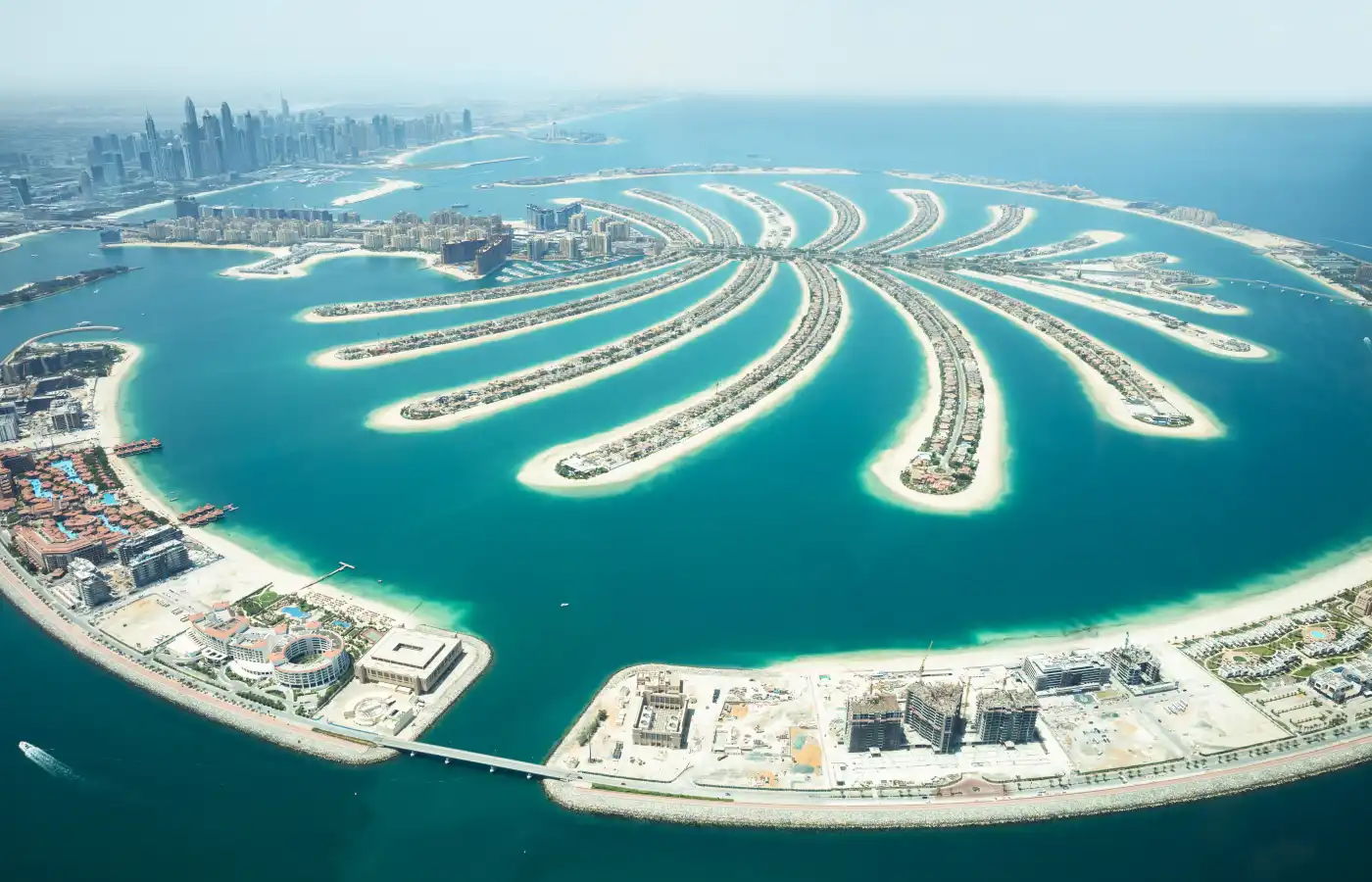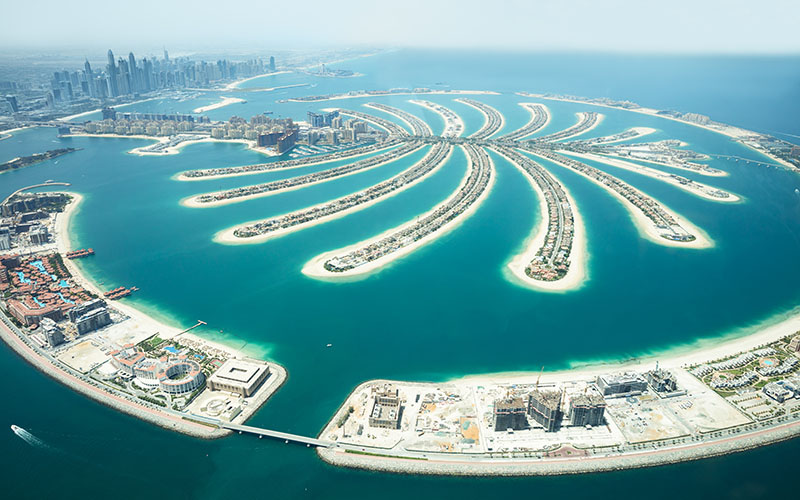Palm Island is perhaps the most ambitious and unique of all mega real estate developments in Dubai, brimming with world-class hotels and resorts, stunning beachfront villas, best-in-class dining establishments, marinas, water parks, and shopping facilities. The brainchild of Sheik Mohammed Bin Rashid al Maktoum and erected by Al Nakheel Properties off Dubai’s coast, the Palm represents an artificial group of islands that are categorized into three: Palm Jumeirah, Palm Jebel Ali and Palm Deira. Occupying an area of about seven million square meters, the Palm holds the distinction of being the world’s largest man-made islands. Apart from these, there are some of the best places to visit in Dubai that make this artificial archipelago a one-of-its-kind global vacation spot.
The Palm Dubai Facts
-
- The Palm Island, as it is seen today, is the outcome of immense planning, and more than one hundred feasibility studies were carried out to review several major aspects of the project, such as marina design, transportation, civil engineering, and technology. Moreover, several veteran divers were roped to examine the rock formations beneath the water and ensure its stability.
- The View at Palm Jumeirah Dubai, upon completion, stands as one of the world’s incomparable attractions, with its remarkable design and engineering marvel.
- What makes this island an iconic attraction of the UAE is its unique design that takes after a date palm with the crescent on its top. A specialty of crescent that bounds the island is that it serves as a breakwater and is made using a blend of sand, rocks and geotextile fiber. With more than 300 openings on every side, the breakwater has the capability to resist harsh weather conditions, especially high waves in the event of storm or typhoon.
- This world-renowned attraction is one of the few attractions that can be seen from the space. Thanks to its impeccable geometry that lend unique shape and massive scale to the project.
- It is estimated that about 100 million cubic meters of sand, in addition to seven million tons of rocks per island, has been used for the construction of this archipelago. Besides a monorail, a sub-sea tunnel is built to help people to move to and fro the mainland. In order to ensure that the sand will firmly hold its position after having dropped, a process, namely, Rainbowing, which employs dredger ships to spray the sand to the proper place, was used.
- Stretching about seven kilometers into the Arabian Gulf, the Palm’s construction has led to the adding of about 180 kilometers of Dubai shoreline, thereby increasing it by incredible 166%.
- Despite its resemblance to palm trees, these islands do not have any real palm trees. Hence, more than 12,000 palm trees are expected to be grown on the island’s nursery.
- Speaking of the islands, the Palm Deira is the largest of all three islands. Slated to be developed as the commercial and residential capital of the archipelago – it will feature a variety of residential townhouses, in addition to marinas, sports facilities, and shopping malls. The smallest of the three islands, the Jumeirah is considered a haven for unlimited leisure and recreation. About 50% bigger than the Jumeirah is the Palm Jebel Ali that will be an entertainment spot for both adults and children.
- Its latest addition Palm Fountain Dubai is a record-breaking dancing fountain.
- Often referred to as the world’s eighth wonder, the Palm Jumeirah boasts of UAE’s some of the best attractions, such as Atlantis Hotel that literally grace the Palm Jumeirah’s crescent, Trump International – a luxurious 300-room hotel at the trunk of the island, Oceana – a beachfront residential and resort development, Kingdom of Sheba – a unique project managed by Fairmont Hotels & Resorts, and Exotica Resort & Spa. From enjoying the world’s largest waterpark to dining at Michelin, there are things to do in Atlantis The Palm.
- With its waters filled with exuberant marine life on the Arabian Gulf, the Palm provides excellent facilities to enable tourists and visitors to indulge in such activities as scuba diving and snorkeling.
FAQs


